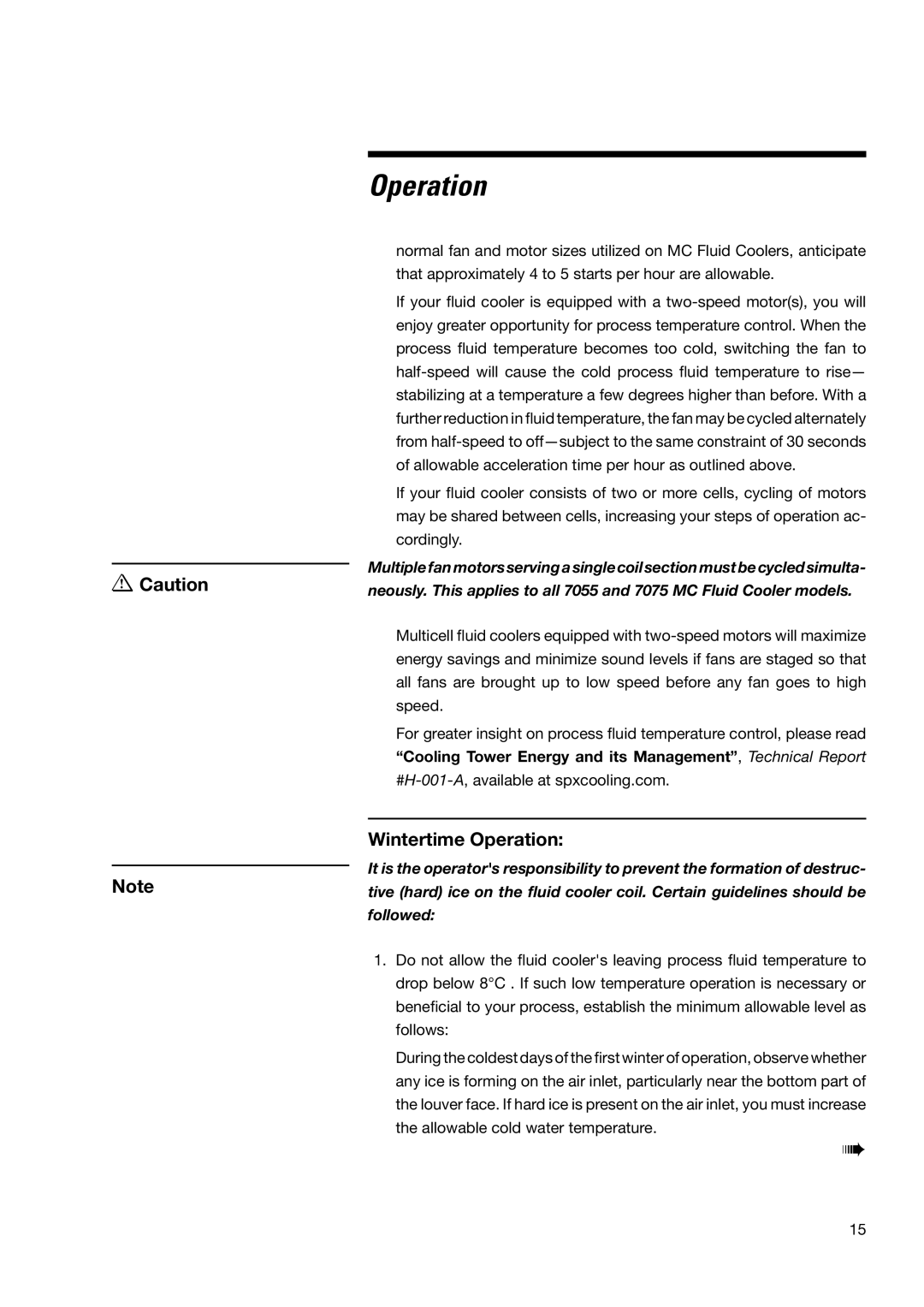
![]() Caution
Caution
Note
Operation
normal fan and motor sizes utilized on MC Fluid Coolers, anticipate that approximately 4 to 5 starts per hour are allowable.
If your fluid cooler is equipped with a
If your fluid cooler consists of two or more cells, cycling of motors may be shared between cells, increasing your steps of operation ac- cordingly.
Multiple fan motors serving a single coil section must be cycled simulta- neously. This applies to all 7055 and 7075 MC Fluid Cooler models.
Multicell fluid coolers equipped with
For greater insight on process fluid temperature control, please read “Cooling Tower Energy and its Management”, Technical Report
Wintertime Operation:
It is the operator's responsibility to prevent the formation of destruc- tive (hard) ice on the fluid cooler coil. Certain guidelines should be followed:
1.Do not allow the fluid cooler's leaving process fluid temperature to drop below 8°C . If such low temperature operation is necessary or beneficial to your process, establish the minimum allowable level as follows:
During the coldest days of the first winter of operation, observe whether any ice is forming on the air inlet, particularly near the bottom part of the louver face. If hard ice is present on the air inlet, you must increase the allowable cold water temperature.
➠
15
